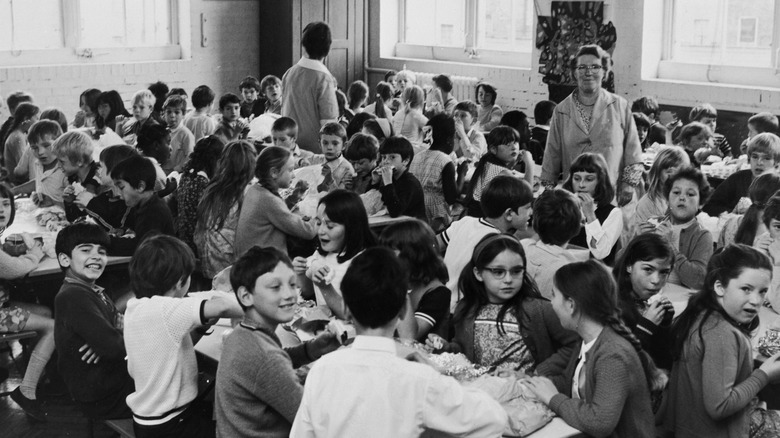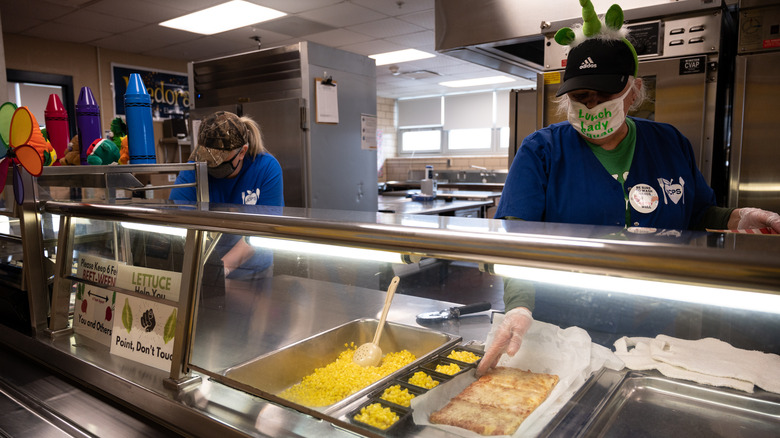How The Modern Day School Cafeteria Came To Be
Nothing creates a buzz around an elementary school quite like the smell of pizza wafting down the halls as it's prepared for that day's lunch. Every student has their favorite hot school lunch: chicken patties, cheese pizza, French toast sticks, or cheeseburgers. There are so many other choices to make, too, such as chocolate or plain milk and which table to sit at and with whom.
It may come as a surprise, but schools didn't always have a cafeteria. According to PBS, kids going to one-room or rural schools would often bring their own lunches because the buildings were not equipped to make lunches. For more urban schools, students would often go home for lunch to eat with fellow family members or stay at school with a lunch they packed. It wasn't until the late 1800s that school lunches began to be offered in certain places within the school, but it didn't become fully implemented in the United States until the mid-20th century, per Mental Floss. Until then, poverty and inequities were huge roadblocks to school lunches and cafeterias across the country.
Helping more kids be successful
At the start of the 20th century, more people felt spurred to help poor children in the U.S. and one way to address that need was through a lunch program, according to Mental Floss. The first school lunches often were prepared by charities. The federal government began to help feed hungry children during the Great Depression as part of President Roosevelt's New Deal, according to Time. Surplus crops were then purchased by the government from farmers and then women were hired to cook and serve the meals to students. This program caught on among the states and by 1941, all states and Washington, D.C. had their own school lunch program, according to Stacker. Those meals often included veggie soup, peanut butter sandwiches, and sometimes fruit.
In 1946, the National School Lunch Act went into effect, which made the lunch program a staple of American schools and it continues to make free and reduced-price lunches and milk available to kids across the country, per Mental Floss. The cafeteria model started earlier in the 1880s with the New York Exchange Buffet and provided self-service dining. Years later, the Childs Restaurant was started that had patrons form a line where they pushed their trays past counters to purchase food that they chose, according to PBS.
Eventually, the school lunch program and the cafeteria model of eating were combined to bring kids food in a convenient way where they could eat a healthy lunch and sit with friends.

